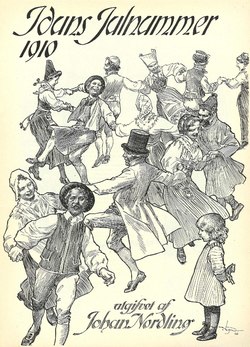You can help expand this article with text translated from the corresponding article in Swedish. (July 2025)Click [show] for important translation instructions.
|
 Title page of the 1910 Christmas issue | |
| Frequency | Weekly |
|---|---|
| Founder | Frithiof Hellberg and C. E. Gernandt |
| First issue | 1887 |
| Final issue | 1963 (merged with Vecko-Journalen ) |
| Country | Sweden |
| Based in | Stockholm |
| Language | Swedish |

Idun was a Swedish magazine for women published in Sweden from 1887 to 1963. [1] [2] [3] It was named after the goddess Idun in Norse mythology, who appears with her basket of apples on its masthead. Idun's target audience was always the educated woman of the bourgeois family, initially aimed at women in the home. Around 1900, its focus changed from being a practical housewife's weekly, to featuring more cultural news, coverage of The Womens Question[ clarification needed ] and women’s suffrage. [4]